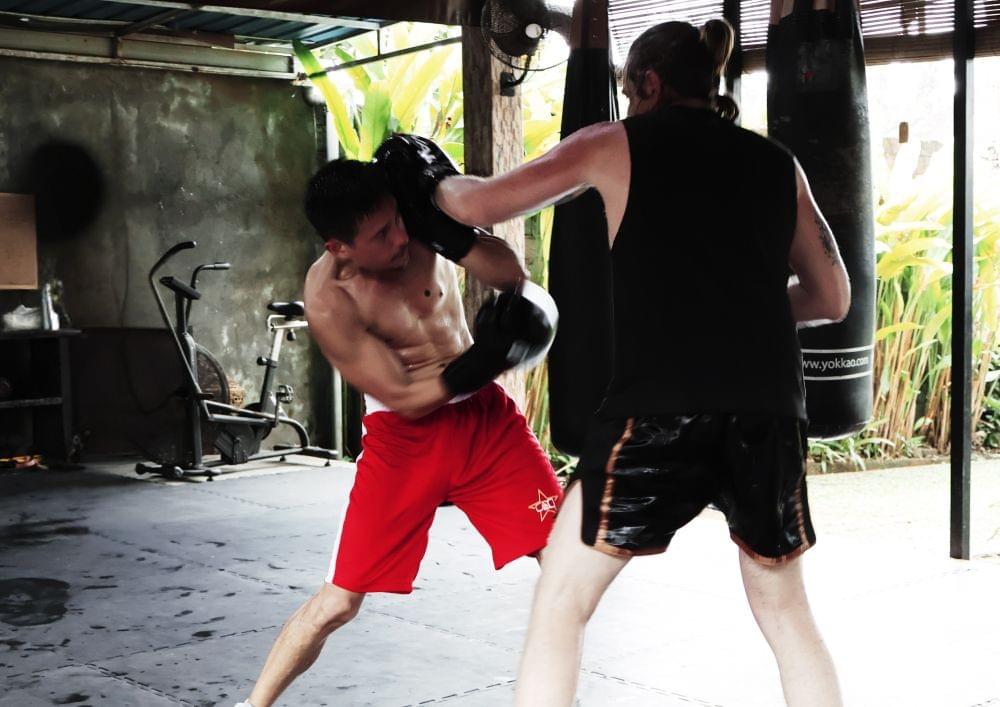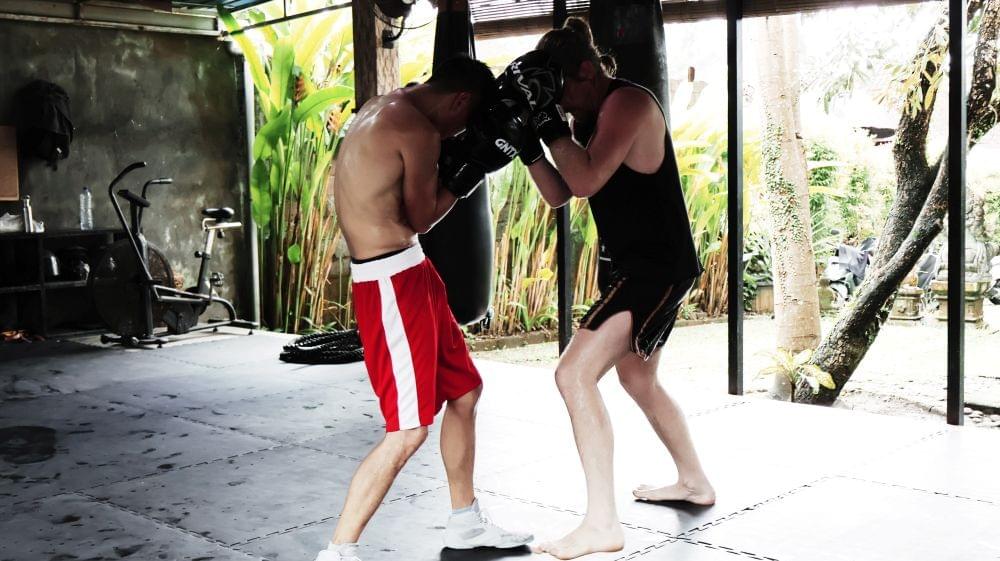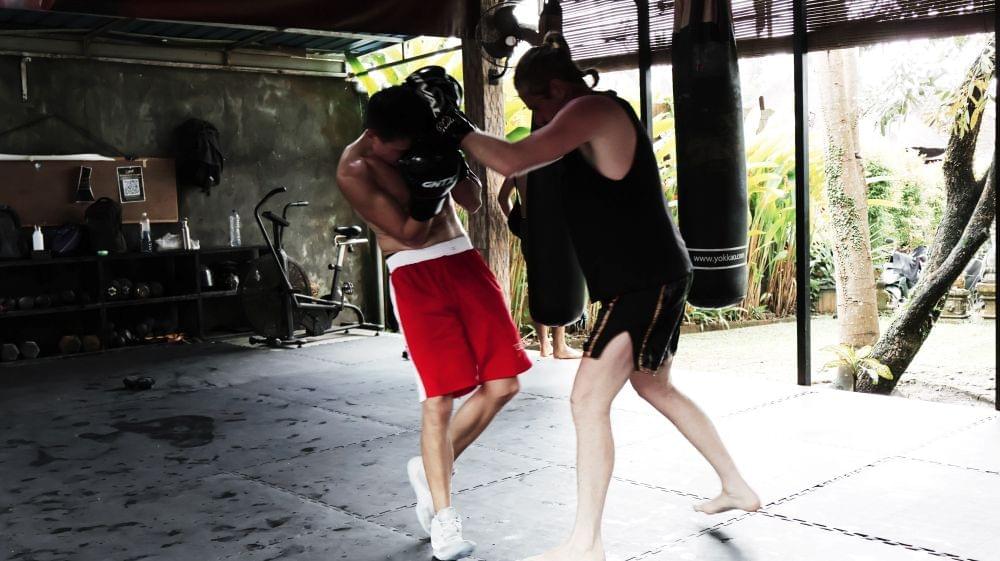Every boxer dreams of having a defense that makes their opponents second-guess every punch. One of the most effective and iconic techniques to achieve that is the boxing shoulder roll. Mastered by defensive greats like Floyd Mayweather Jr., this skill doesn’t just block shots; it neutralizes attacks while setting up perfect counters. If you want to add finesse and frustration to your defense, learning the shoulder roll is a must.
What Is the Boxing Shoulder Roll?

The boxing shoulder roll is a defensive maneuver that uses subtle body angles and shoulder positioning to deflect punches instead of absorbing them. By rolling the lead shoulder inward and slightly leaning back, you can redirect incoming punches away from your chin. This technique allows you to stay relaxed under pressure, conserve energy, and create counterpunching opportunities.
Unlike traditional high-guard defenses, the shoulder roll isn’t about covering up, it’s about using timing, positioning, and efficiency to make opponents miss and pay.
Key Mechanics of the Shoulder Roll
Lead Shoulder Positioning
Your lead shoulder is your shield; it should be slightly raised and rotated inward to protect your chin and deflect straight punches. By angling the shoulder correctly, jabs and crosses slide harmlessly away instead of landing clean. This positioning also sets up a natural spring for counterpunches.
Chin Tucked & Eyes Forward
Keeping your chin tucked behind the lead shoulder makes you a smaller target and reduces the risk of getting clipped. At the same time, your eyes should stay locked on your opponent, allowing you to read their movements without sacrificing defense. This balance of protection and awareness is what makes the shoulder roll so effective.
Rear Hand Guard
Your rear hand is the safety net of the boxing shoulder roll. It stays high, ready to catch hooks, block uppercuts, or parry shots that slip past your shoulder. Think of it as the second layer of defense that ensures you’re never exposed.

Hip and Torso Movement
The shoulder roll isn’t just about the arm; it comes from the hips and torso working together. A subtle twist of your body absorbs the impact of incoming shots while preparing you to fire back instantly. This movement keeps you relaxed under pressure while maintaining explosive countering potential.
Weight Distribution
Proper stance is everything. By keeping most of your weight on your back foot, you stay balanced, mobile, and ready to pivot or roll again. This distribution also helps you shift quickly between defense and offense, turning the shoulder roll into a fluid part of your overall strategy.
How to Practice the Shoulder Roll in Training
1. Mirror Drills
Practicing in front of a mirror allows you to refine technique without pressure. You can see your positioning, ensure your shoulder covers your chin, and check that your rear hand stays up. This is the foundation for building correct habits.
How to do it:
- Stand in your boxing stance facing a mirror.
- Slowly roll your left shoulder inward while keeping your chin tucked.
- Watch that your rear hand stays in guard as you “slip” imaginary punches.
- Repeat in slow motion until your form feels natural, then gradually add speed.
2. Pad Work
Pad work brings the shoulder roll to life by adding reaction and counterpunching. Your coach becomes the attacker, throwing shots for you to defend and respond to in real time. This teaches rhythm and timing, two essentials for using the shoulder roll effectively.
How to do it:
- Have your coach throw straight punches (jabs and crosses).
- Use the shoulder roll to deflect each punch while maintaining balance.
- Immediately counter with a jab, cross, or hook after the roll.
- Continue in combinations, focusing on staying relaxed and fluid.
3. Heavy Bag Practice
A heavy bag gives you resistance and impact, making your shoulder roll more realistic. Instead of standing still, you’ll simulate punches by pushing the bag toward yourself and rolling off at the right angles. This helps you build the strength and endurance needed to hold the shoulder roll for long rounds.
How to do it:
- Push the heavy bag toward your body as if it’s an incoming strike.
- Roll your shoulder inward and slightly lean back to redirect the force.
- As you roll, throw a counter jab or cross into the bag.
- Repeat for 2–3 rounds, keeping the rhythm of defense into offense.
4. Controlled Sparring
The best way to test your shoulder roll is under pressure—but start light. Controlled sparring lets you apply the mechanics in a realistic fight scenario without the risk of bad habits forming under stress. This is where you develop confidence in the move.
How to do it:
- Spar lightly with a partner, asking them to throw mostly straight punches.
- Practice rolling off shots, keeping your form tight, and your rear hand up.
- Add in simple counters after each roll, such as the straight right or left hook.
- As you improve, increase the pace and add more punch variety from your partner.
Common Mistakes to Avoid with the Shoulder Roll
Over-Rotating the Shoulder
A frequent mistake is rolling the lead shoulder too far inward, which throws off your balance and leaves your body exposed to hooks and body shots. The shoulder roll is meant to be subtle, with just enough rotation to deflect punches away.
Overdoing it not only breaks your stance but also slows your ability to counter quickly, making you an easier target for experienced opponents.

Dropping the Rear Hand
Many fighters focus so much on the lead shoulder that they forget about the rear hand. Dropping this guard creates dangerous openings for hooks and uppercuts, which can be devastating in close range.
The rear hand should always stay high as a secondary shield, ready to block or parry, while also being positioned to fire back instantly with a counter straight or uppercut.
Leaning Too Far Back
Another common error is leaning excessively backward when rolling. While it may help you evade a punch, it compromises your balance and makes it nearly impossible to launch an effective counter. Instead of relying on leaning, the roll should come from controlled shoulder rotation and torso movement, allowing you to stay in range and strike back immediately.
Using It Against Every Opponent
The boxing shoulder roll is a powerful defensive tool, but it’s not a one-size-fits-all technique. It works best against aggressive fighters who throw straight punches, but it can fail against swarming pressure fighters or tricky southpaws.
Smart boxers use the shoulder roll selectively, blending it with slips, pivots, and parries to remain unpredictable and well-protected.
Mastering the boxing shoulder roll takes patience, discipline, and consistent practice, but the payoff is huge. When executed correctly, it frustrates opponents, shuts down their offense, and opens up sharp countering opportunities. Add it to your defensive toolkit, train it with intention, and you’ll develop a style that combines skill, confidence, and control inside the ring.
If you’re in Bali and want to sharpen your boxing defense with expert guidance, join us at Ubud Muay Thai. Our experienced trainers will help you master techniques like the shoulder roll while improving your overall boxing fundamentals. Whether you’re a beginner or an advanced fighter, our supportive training environment in Ubud is the perfect place to elevate your skills.

